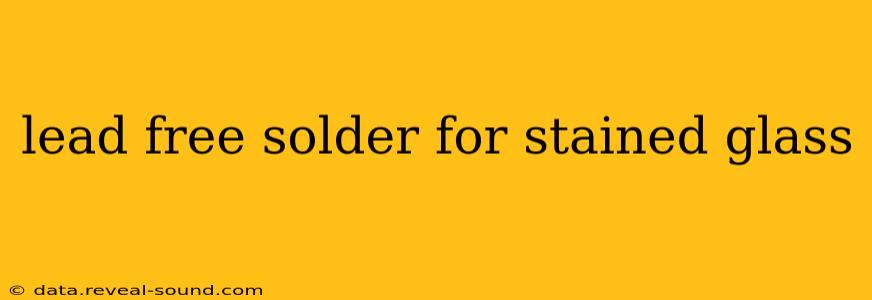Lead-based solder has long been the standard in stained glass work, prized for its strength and ease of use. However, growing concerns about lead toxicity have led to increased demand for lead-free alternatives. This comprehensive guide explores the world of lead-free solder for stained glass, addressing common questions and concerns to help you make an informed decision.
What is Lead-Free Solder?
Lead-free solder is, quite simply, a solder alloy that doesn't contain lead. Traditional stained glass solder is typically a tin-lead alloy (60/40 or 63/37 being common ratios). Lead-free options usually substitute lead with other metals, most commonly tin, silver, and copper. These formulations aim to provide comparable strength and workability to lead-based solder while eliminating the health hazards associated with lead exposure.
Is Lead-Free Solder as Strong as Lead Solder?
This is a common question, and the answer is nuanced. While some lead-free solders achieve comparable strength to traditional lead solder, others may not. The strength of the solder joint depends on several factors, including the solder's composition, the technique used during soldering, and the cleanliness of the glass surfaces. Generally speaking, lead-free solder requires more attention to detail during the soldering process to ensure a strong, durable bond. It may require a slightly higher temperature and careful flux application for optimal results.
What are the Advantages of Using Lead-Free Solder?
The primary advantage is the elimination of lead exposure. Lead is a toxic heavy metal, and inhaling lead fumes or ingesting lead particles can have serious health consequences. Using lead-free solder significantly reduces the risk of lead poisoning for both the artist and anyone who handles the finished piece. Additionally, some artists prefer lead-free solder for its environmentally friendly aspects.
What are the Disadvantages of Using Lead-Free Solder?
While lead-free solder offers significant health and environmental benefits, it does have some drawbacks. Some artists find it more challenging to work with than lead solder, citing its higher melting point and potentially different flow characteristics. The cost of lead-free solder is often higher than lead solder. Finally, the long-term durability of some lead-free solders is still under evaluation, although advancements in formulation are constantly improving their performance.
What type of flux should I use with lead-free solder?
The type of flux you use is crucial for successful soldering with lead-free solder. Many standard fluxes are compatible, but you might need to experiment to find what works best for your specific lead-free solder and technique. Look for fluxes specifically designed for lead-free applications.
Does lead-free solder require a different soldering technique?
While the fundamental principles of stained glass soldering remain the same, lead-free solder may require some adjustments in technique. You may need to use a hotter iron, apply the solder more precisely, and ensure your glass is exceptionally clean. Practice is key to mastering the use of lead-free solder.
Where can I buy lead-free solder for stained glass?
Lead-free solder for stained glass is increasingly available from art supply stores both online and brick-and-mortar. You can also find it through specialized stained glass suppliers. When purchasing, ensure the product is specifically designed for stained glass applications and that you understand the manufacturer's recommendations for use.
How do I dispose of lead-free solder safely?
While lead-free solder is significantly safer than lead solder, proper disposal is still important. Check with your local waste management authority for guidance on disposing of metal scraps and soldering materials.
In conclusion, lead-free solder offers a safer and more environmentally conscious alternative to traditional lead solder for stained glass work. While it may require some adjustment in technique and potentially a higher initial investment, the long-term health and environmental benefits make it a compelling choice for many artists. As technology advances, lead-free solders are continually improving, providing artists with increasingly reliable and user-friendly options.
